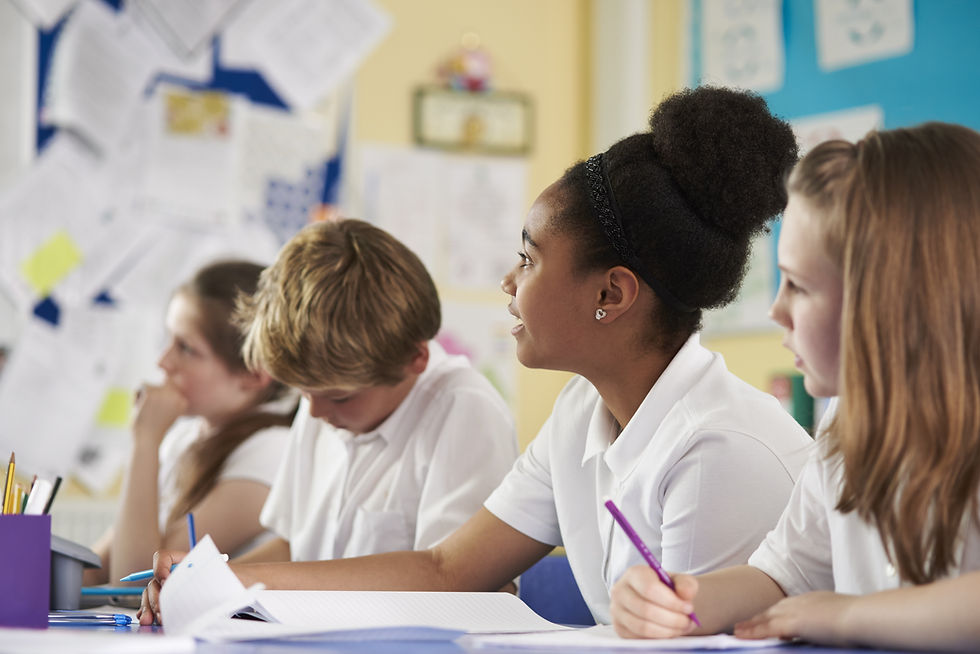Study shows that children performs worse in spaces with delayed sound reception.
- Arina Musthafa

- Jun 20, 2021
- 3 min read

Source (Wix)
Kaiserslautern, 20 June 2021 – A study which was done on the effects of classroom reverberation on children’s performance at school in Germany reached into a conclusion that children were very vulnerable to sound delays.
Performance and questionnaire data were collected from 487 children from 21 classrooms which differed in mean reverberation time from 0.49 to 1.1 seconds.
In order to execute this study, primary schools in Stuttgart, Germany, were recruited in which the number of children with a mother language other than German did not exceed 50%.
Acoustical measurements were then performed in 60 classrooms from 18 schools, with the aim to achieve a sample of classrooms that differed markedly in reverberation times.
In order to keep some variables into constants, the rooms were kept at a rectangle with an average volume of 231 cubic meter.
Since the data were collected near the end of the school year, the first graders – which consisted of 48 boys and 41 girls – had a mean age of 7 years and 5 months.
Meanwhile, the second graders – which consisted of 201 boys and 197 girls – had a mean age of 8 years and 6 months.
In each school, the testing took place over a week, with a maximum of two hours per day. In total, all the data were collected within a period of eight weeks.
The study was conducted by the whole classroom simultaneously at one time. Thus, the pupils’ desks were arranged in four to five rows in each classroom.
Paper boards were placed between adjacent seats to avoid distraction in order to prevent recognition of the seat neighbours’ answers.
The pictures were presented via a notebook and a low-noise projector on a screen in front of the classroom.
The speech materials were presented via loudspeaker on the teacher’s desk with a signal level of 65 dB(A) in one-meter distance, imitating a teacher talking in class.
In each task – except for the reading and spelling tests and the questionnaires – pictures of the children’s response sheets were shown on the screen.
The second-grade classes were divided into three groups on the basis of the reverberation times in the classrooms. The groups are referred to as RT_1, RT_2, and RT_3.
For group RT_1, the reverberation times were shorter than 0.6 seconds (around 0.49 to 0.56), which consisted of five classes from two schools, with a total of 126 participants.
In RT_2, reverberation times ranged from 0.69 to 0.92 seconds. This group consisted of eight classrooms from five schools with a total of 175 participants.
RT_3 comprised the classrooms with reverberation times longer than a second. This group consisted of 97 participants from four classrooms in three different schools.
The students were given five sets of questionnaires, ranging on: reading and spelling, non-verbal intelligence, phonology, noise, and social and emotional attitudes. Parental-related questions were given to parents.
However, only four were closely measured and tested which were reading and spelling, phonological processing, noise rating, and social and emotional school experience.
Post hoc tests revealed that children from group RT_3 performed better in reading and spelling when compared to those of group RT_1 and RT_2.
The result was attributed to differences in sociodemographic variables in favor of RT_3.
Post hoc tests on phonological processing confirmed that better performance in the children from group RT_1 when compared to RT_2 and RT_3.
Post hoc tests confirmed that indoor noise ratings were lower for the children whose classrooms had short reverberation (RT_1) when compared to children from classrooms with longer reverberation.
Bonferroni-corrected post hoc tests revealed that the classrooms had long reverberation (RT_3) judged these aspects less positively than the classrooms with medium (RT_2) and short reverberation (RT_1).
Children whose classrooms had long reverberation (RT_3) performed worse than children from classrooms with short reverberation (RT_1) on almost everything.
The current study provides further evidence for the importance of adequate listening conditions in classrooms.
In addition to the effect of classroom reverberation on speech perception, there are evidence for negative effects on phonological processing and on the children’s social-emotional school attitudes.













Comments